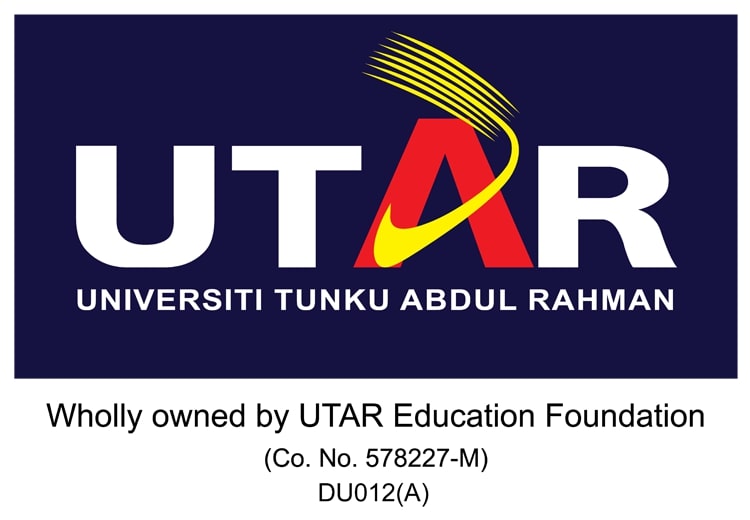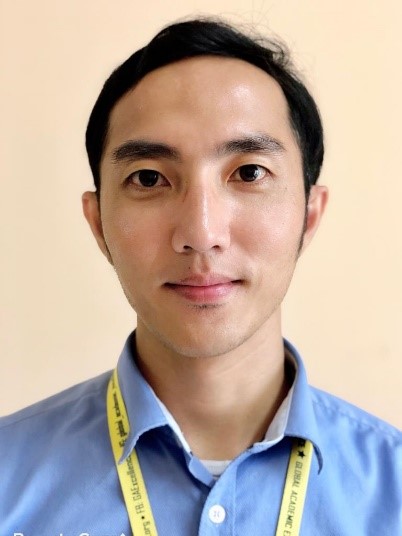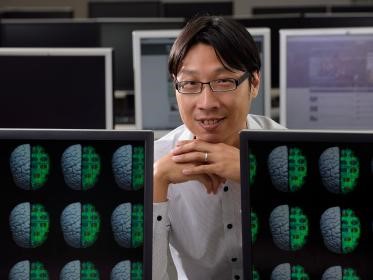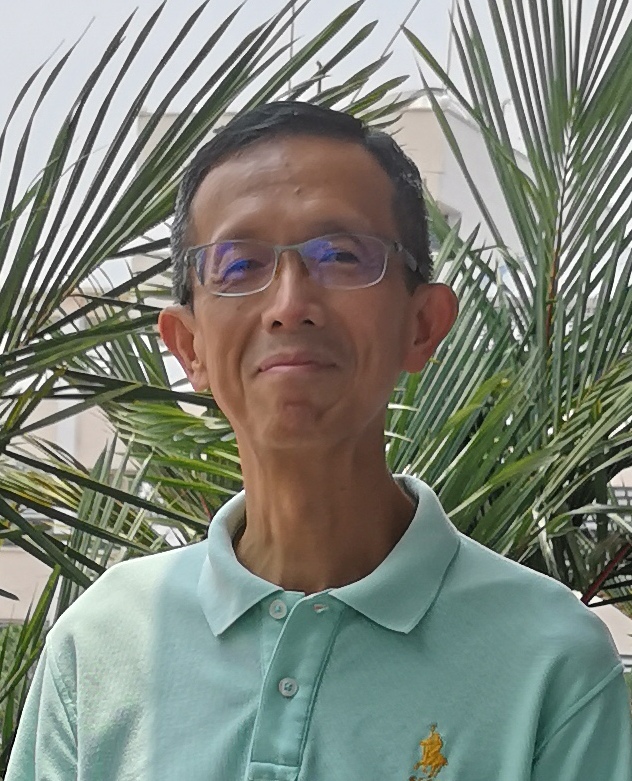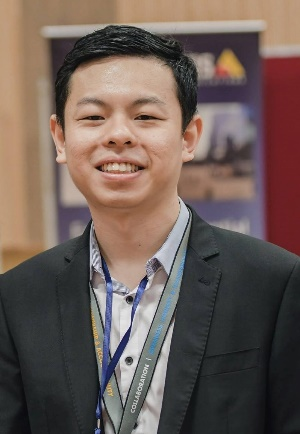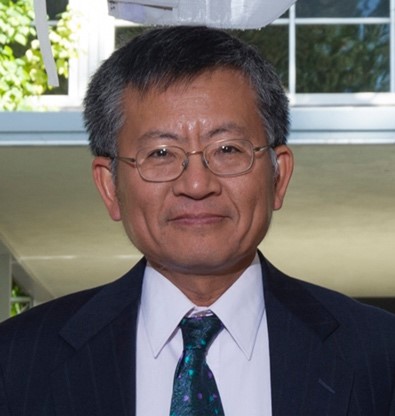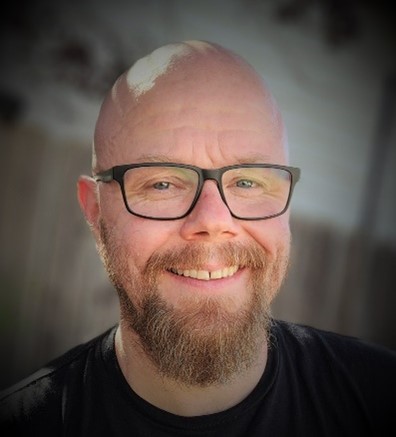Date: 09 November 2023 (Thursday)
Time: 8.00 am – 5.30 pm
Venue: Multiple Purpose Hall (MPH), KB
The program book can be downloaded here.
| Time | Agenda |
| 08.00 am – 08.25 am | Registration & Breakfast, MPH |
| 08.25 am – 08.30 am | Welcoming Remarks Dr Yap Wun She Dean Lee Kong Chian Faculty of Engineering and Science Universiti Tunku Abdul Rahman, Malaysia |
| 08.30 am – 09.00 am | Keynote Speaker 1: Advanced Fire Protection Materials for Smoke Extraction Ductwork System and Electrical Cables Dr Yew Ming Chian, Associate Professor, Department of Mechanical and Material Engineering Lee Kong Chian Faculty of Engineering and Science Universiti Tunku Abdul Rahman, Malaysia |
| 09.00 am – 09.45 am | Keynote Speaker 2: My Journey from a Mechanical Engineer to a Cardiovascular Researcher (via Team) Dr Lee Lik Chuan, Associate Professor, Department of Mechanical Engineering, Michigan State University, USA |
| 09.45 am – 10.15 am | Keynote Speaker 3: My Professional Journey as a Farming Equipment Engineer at John Deere Dr. Teh Kuen Tat, John Deere (retired), USA |
| 10.15 am – 10.45 am | Keynote Speaker 4: From Postgraduate to Entrepreneur: How I Turned My Passion into a Business Dr Tey Jing Yuen Assistant Professor + Co-founder of Solid Lab Sdn Bhd Department of Mechanical and Material Engineering Lee Kong Chian Faculty of Engineering and Science Universiti Tunku Abdul Rahman, Malaysia |
| 10.45 am – 11.30 am | Keynote Speaker 5: Signals of Opportunity Synthetic Aperture Radar for High Resolution Imaging of Land Surface Dr Simon Yueh Senior Research Scientist Jet Propulsion Laboratory California Institute of Technology, CA, USA National Aeronautics and Space Administration (NASA), USA |
| 11.30 am – 12.15 pm | Keynote Speaker 6: NASA Soil Moisture Active Passive Mission Cal/Val Approach, Field Experiments and Results Dr Andreas Colliander Research Scientist Jet Propulsion Laboratory California Institute of Technology, CA, USA National Aeronautics and Space Administration (NASA), USA |
| 12.15 pm – 1.30 pm | Lunch & Postgraduate Project Demo, MPH, KB |
| 1.30 pm – 5.30 pm | Postgraduate presentations (parallel sessions) KB 301, KB 304, KB 322, KB 607, KB 608, MPH (Hall A) |
| 5.30 pm | Networking session & refreshment, MPH (Hall B), KB |
Keynote speaker 1: Advanced Fire Protection Materials for Smoke Extraction Ductwork System and Electrical Cables
Associate Professor Ir. Ts. Dr Yew Ming Chian is an accomplished researcher and academic in the field of engineering. He obtained his Bachelor of Engineering (Hons.) in Materials Engineering, Master of Engineering Science, and a Ph.D. in Structural Fire Protection Engineering from the Faculty of Engineering at the University of Malaya (UM). After gaining experience in the building and Oil & Gas industries, Dr Yew joined the Lee Kong Chian Faculty of Engineering at the University of Tunku Abdul Rahman (UTAR). Throughout his career, he has made significant contributions to various research areas and has demonstrated excellence in his field. Dr Yew’s primary research focuses on developing Intumescent Coatings and Advanced Fire Protection Materials, ensuring compliance with relevant British Standards. He is also involved in research related to Cool Roofing Technologies Systems, Fire Protection Composite Materials and Advanced Materials Technology after gaining experience in the building and Oil & Gas industries. Dr Yew has been recognized for his research contributions through numerous international-level awards.
Dr Yew actively participates in professional organizations and holds several professional qualifications. He is a registered Professional Engineer (Ir.) with the Board of Malaysia Engineers (BEM) and a Chartered Engineer (CEng) registered with the Engineering Council UK. He is also a registered Professional Technologist (T.s) with the Malaysia Board of Technologists, a Member of The Institution of Fire Engineers (UK) (MIFireE) and Associate of Fellow of ASEAN Academy of Engineering & Technology (AAET).
In addition, he is a prolific inventor. He received the Most Innovative Excellent Award from UTAR for his outstanding work. His research outcomes, derived from his patented intellectual property and ongoing collaboration with industries, have earned him recognition as an expert in his field. Dr Yew’s dedication to research, extensive publication record, involvement in consultancy, and active engagement in the academic community have established him as a respected figure in the field of fire protection engineering.
Abstract: In this talk, I would like to share the Intumescent fire protective coatings (IFPCs) are commonly used in smoke extraction ductwork systems and for enhancing the fire resistance of electrical cables. These coatings provide an additional layer of protection by expanding and forming an insulating char when exposed to high temperatures, thus slowing down the spread of fire and protecting the underlying materials. The coating is typically sprayed or brushed onto the duct surfaces, forming a fire-resistant barrier. IFPCs for ductwork are designed to be durable and long-lasting. They should be resistant to mechanical damage, moisture, and other environmental factors to ensure the coating’s effectiveness over time. IFPCs for electrical cables should comply with relevant fire safety standards and regulations
Keynote speaker 2: My Journey from a Mechanical Engineer to a Cardiovascular Researcher
Dr Lee Lik Chuan is an Associate Professor and the Associate Chair of Graduate Studies in the Department of Mechanical Engineering at Michigan State University (MSU). He received his PhD in Mechanical Engineering from the University of California, Berkeley in 2010 and was a postdoc at University of California, San Francisco until 2014 when he joined MSU as a faculty member. Prior to that, he received his Bachelor of Engineering degree and a Master of Science in High Performance Computation in Engineered System from the National University of Singapore in 2003. His main research interests are in computational modeling of the cardiovascular system with a focus in cardiac electrophysiology, mechanics, growth and coronary perfusion. He is also the principal investigator of several grants from National Institute of Health, National Science Foundation and American Heart Association.
Abstract: Pursuing a postgraduate degree is becoming increasingly important to stay relevant as technologies become increasingly complex and multidisciplinary. In this talk, I will share my postgraduate journey starting from Singapore as a MS student in the Singapore-MIT Alliance program and then as an engineer, before going to the United States to pursue my PhD degree, postdoctoral training and eventually becoming a faculty member in the Department of Mechanical Engineering at Michigan State University. Additionally, I will also share my experience in switching from a “traditional” mechanical engineering research area to an interdisciplinary biomedical research field focusing on cardiovascular modeling. I will discuss our research endeavor in developing computer models that couple different physics (multiphysics) as well as bridging across different spatial and temporal scales (multiscale) to simulate heart diseases and treatments. I will also talk about my collaborations with researchers from different fields and backgrounds such as clinicians, experimentalists, physiologists etc., and how these collaborations enabled us to develop better computer models to predict the progression of heart diseases and the effects of treatments.
Keynote speaker 3: My Professional Journey as a Farming Equipment Engineer at John Deere
Dr. Teh Kuen Tat received B.S. degree (Mechanical Engineering) in 1986 and M.S. degree (Engineering Mechanics) in 1989 from Southern Illinois University at Carbondale, and Ph.D. degree (Engineering Mechanics) from Virginia Tech in 1993. He continued his research work as a post-doctoral fellowship and later as a research associate at Material Technology Center, Southern Illinois University. His research area was in the material properties characterization, impact damage resistance and tolerance, and fatigue of advanced composite materials. He joined John Deere in 1999 and worked in the product and technology developments. He retired from John Deere and relocated back to Malaysia from the USA in 2017. He is now volunteering his spare time at his alma mater Chung Hua High School Seremban.
Abstract: In this talk, I would like to share my professional journey and experience at John Deere. John Deere is a global machinery manufacturer famous for its agricultural farming equipment. It has designed and produced the most advanced farming equipment such as tractor, sprayer, harvesting combine, sugarcane harvester and cotton picker used in the farmlands around the world. The farming equipment has evolved from labour intensive to autonomous, and innovative technology has improved its efficiency and productivity. I will present a few examples of the technology innovation project I had worked on for making a durable and lower cost product.
Keynote speaker 4: From Postgraduate to Entrepreneur: How I Turned My Passion into a Business
Dr Tey Jung Yuen is an assistant professor at the Lee Kong Chian Faculty of Engineering and Science, Department of Mechanical and Material Engineering, Universiti Tunku Abdul Rahman (UTAR). He obtained his Bachelor of Engineering (Hons) in Mechanical Engineering from Universiti Malaya (UM) and his Doctor of Philosophy in Mechanical Engineering from the same university. He is a professional engineer (PEng) and a chartered engineer (CEng). Dr Tey has 10 years of working experience in the automotive industry, specializing in vehicle dynamics, finite element analysis, vibration, product design and development. He is also an expert in additive manufacturing, stochastic optimization, and machinery design. He has been involved in various research projects funded by UTAR, MARC16, PETRONAS, Royal Society, Academy of Sciences Malaysia, MOHE FRGS, MOSTI Science Fund, and other industry partners. Dr Tey is also the co-founder of Solid Lab Sdn Bhd, a company that provides 3D printing solutions for various applications. He is passionate about developing innovative and cost-effective technologies for the benefit of society.
Abstract: In this talk, I will share my entrepreneurship experience with the postgraduate students and inspire them to pursue their own dreams. I will cover the following topics:
- How you decided to start your own business after completing your postgraduate studies
- What challenges and opportunities you faced as a new entrepreneur
- How you leveraged your academic skills and network to grow your business
- What advice and tips you have for postgraduate students who want to become entrepreneurs
- How you balance your work and life as an entrepreneur
Keynote speaker 5: Signals of Opportunity Synthetic Aperture Radar for High Resolution Imaging of Land Surface
Simon H. Yueh received the Ph.D. degree in Electrical Engineering in January 1991 from the Massachusetts Institute of Technology (MIT). He was a postdoctoral research associate at the MIT from Feb to Aug 1991. In Sept 1991, he joined the Radar Science and Engineering Section at the Jet Propulsion Laboratory (JPL). He was the supervisor of radar system engineering and algorithm development group from 2002-07, the deputy manager of Climate, Oceans and Solid Earth section from July 2007 to Mar 2009, and the section manager from Apr 2009 to Jan 2013. He served as the Project Scientist of the National Aeronautics and Space Administration (NASA) Aquarius mission from Jan 2012 to Sept 2013, the Deputy Project Scientist of NASA Soil Moisture Active Passive (SMAP) Mission from Jan 2013 to Sept 2013, and the SMAP Project Scientist since Oct 2013. He has been the Principal/Co-Investigator of many NASA and DOD research projects on remote sensing of ocean salinity, ocean wind, terrestrial snow and soil moisture. He has authored 4 book chapters and published >300 publications and presentations. He received the 2021 IEEE J-STARS Prize Paper Award, 2014, 2010, 2002 and 1995 IEEE GRSS Transaction Prize Paper awards, and the 2000 Best Paper Award in the IEEE International Geoscience and Remote Symposium 2000. He received the JPL Lew Allen Award in 1998, Ed Stone Award in 2003 and 2023, NASA Exceptional Technology Achievement Award in 2014, and NASA Outstanding Public Leadership Medal in 2017. He was an associate editor of Radio Science from 2002 to 2006 and the Editor in Chief of IEEE Transactions on Geoscience and Remote Sensing from 2018-2022. He is the Fellow of IEEE, and a member of URSI Commission-F.
Abstract: Signals of Opportunity (SoOp) radar has become one of the major remote sensing technologies due to technology development in the past 3 decades. The 3 well-known technologies for remote sensing of land surface are monostatic (backscatter) radar, radiometer, and reflectometer. Radiometers detect natural radio emission and their spatial resolution is limited by the size of antenna aperture, nominally >10 km from space. Monostatic radars use their own transmission sources and can be configured to achieve high spatial resolution (~10 m or better). However monostatic radars are nominally expensive to develop, whether for aircraft or spacecraft platforms. Reflectometer is one form of SoOp radars, operating in a bistatic configuration using existing radio sources, can be developed at a much lower cost than monostatic radars, but has a limited spatial resolution (about 10-20 km from space). This presentation will provide an overview of these technologies and present the most recent development of SoOp Synthetic Aperture Radar (SoOpSAR) technology, which can extend the reflectometry technologies to achieve high spatial resolution. Examples of the SoOp radar technologies for soil moisture, vegetation water content and snow will also be provided based on data from NASA CYGNSS mission as well as recent ground and airborne campaigns conducted by JPL. Future topics of research will be suggested.
Keynote speaker 6: NASA Soil Moisture Active Passive Mission Cal/Val Approach, Field Experiments and Results
Andreas Colliander the D.Sc. (Tech.) degree in Electrical Engineering from Aalto University, Espoo, Finland, in 2007. His main project was related to instrument development for the European Space Agency’s (ESA) SMOS (Soil Moisture and Ocean Salinity) mission. He was a Postdoctoral Research Fellow at ESA’s European Space Research and Technology Centre (ESTEC) from 2007 to 2008. In Dec 2008, he joined the Earth Science Section at the Jet Propulsion Laboratory (JPL). He is currently a Research Scientist with the Microwave Instrument Science group at JPL. He is responsible for the calibration and validation (cal/val) of the geophysical products of NASA’s SMAP (Soil Moisture Active Passive) mission, which entails coordinating a large international coalition of participants to collect ground truth data, leading field experiments, deploying airborne instruments along with intensive manual measurements, and assessing the performance of the data products. Besides the cal/val work for SMAP, Dr. Colliander has participated in and led several other projects focused on developing microwave remote sensing techniques, calibrating airborne and spaceborne microwave radiometers, and utilizing microwave measurements to learn more about the Earth’s geophysical processes. One of Dr Colliander’s focus areas is developing ice sheet meltwater retrieval using microwave radiometers, including developing this capability for the ESA’s upcoming CIMR (Copernicus Imaging Microwave Radiometer) mission. He also serves as a member of the CIMR Mission Advisory Group.
Abstract: The Soil Moisture Active Passive (SMAP) mission has engaged in a systematic calibration and validation of the geophysical retrievals since the launch of the mission. The primary validation reference is ground-based measurements. The so-called core validation sites form the backbone of the effort. These sites are well characterized with a calibrated network of in situ measurements representing the SMAP footprint scale; they are used to determine the quality of the data products. Additionally, more sparsely distributed in situ networks, other remote sensing products, and model-based products are used as complimentary resources to expand the spatial and temporal scope of the evaluation. To target specific issues with the products and to advance the understanding of the physics behind the retrieval algorithms, the mission uses field experiments that provide very detailed reference data for a limited set of conditions. Recently, the mission conducted the SMAP Validation Experiment 2019-2022, targeting the improvement of soil moisture (SM) and vegetation optical depth (VOD) retrievals in forested regions. During the experiment, SM, soil and air temperature, tree trunk water content changes, and tree phenology were monitored with over 20 stations at two sites in the deciduous forest region in Massachusetts and New York. In 2022, intensive observations were carried out at each site, which involved manual measurements of SM, surface, and vegetation. The manual measurements characterized the evolution of SM, the surface roughness, the geometric structure of the forest, and the water content of the trees and the understory. The manual measurements were supported by a portable terrestrial laser scanner and estimates of VOD using GPS receivers. Both sites were also mapped entirely by an airborne lidar in leaf-off and peak biomass conditions. The early results of the campaigns have already demonstrated that SMAP is sensitive to SM in these forests. Among other results, the changes in the water content of trees were related to seasons and temperature using dielectric probes. VOD is sensitive to these crucial indicators of the tree’s growth cycle. VOD was also independently measured with global navigation satellite system transmissiometry (GNSS-T) setups. These setups include two GNSS receivers, one outside and the other inside the canopy. The setup can be stationary or deployed at multiple locations to sample the spatial variability of VOD across scales. The detailed characterization of the forest structure will allow a comparison of the measurements with electromagnetic models. The new fast hybrid method (FHM) can incorporate tree height, tree density, dielectric constant, canopy thickness, branch distribution, and other such descriptors of the trees and include their realistic structure in simulating vegetation transmission and scattering. The model’s fidelity allows for representing forests’ complex transmission and scattering mechanisms. Together, the activities using the measurements and electromagnetic modeling are expected to reveal new insights into retrieving SM and VOD and relating VOD to biomass and vegetation water content.
